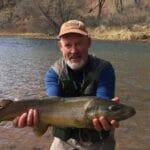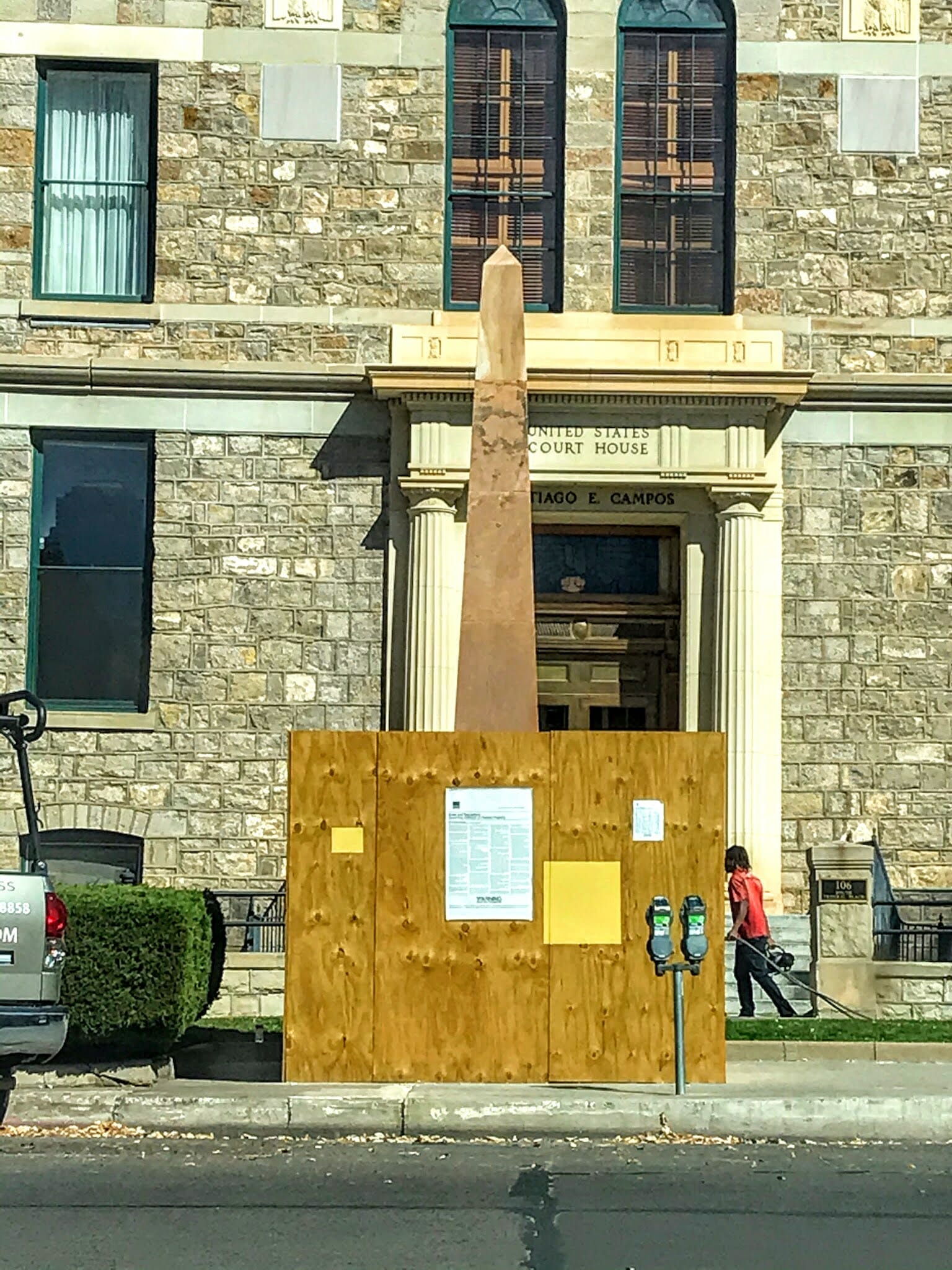Since 1867, an obelisk has stood in the center of Santa Fe’s downtown plaza to honor fallen Union soldiers in Civil War battles fought in New Mexico, as well as soldiers who fought against “savage Indians.”
Another structure nearby honors Kit Carson who, as a Union colonel, did as much as anyone to push the Southwest’s Indigenous People to the brink of extinction. A statue on the grounds of one of Santa Fe’s prominent cathedrals honored Don Diego de Vargas, the leader of Spain’s violent reconquest of New Mexico’s tribes in the late 17th century, a period that remains a sore spot between natives and Spanish descendants.
By many accounts, the reconquest was followed by centuries of relative harmony during which Pueblos and Spanish settlements cooperated extensively. Many Hispanic New Mexicans trace their origins to land-grant communities. Many can’t, due in large part to a man named Thomas B. Catron, a Santa Fe lawyer who, in the late 1800s, became the nation’s largest landowner (over 3 million acres) by swindling land grant heirs out of property. A Santa Fe street bears Catron’s name.
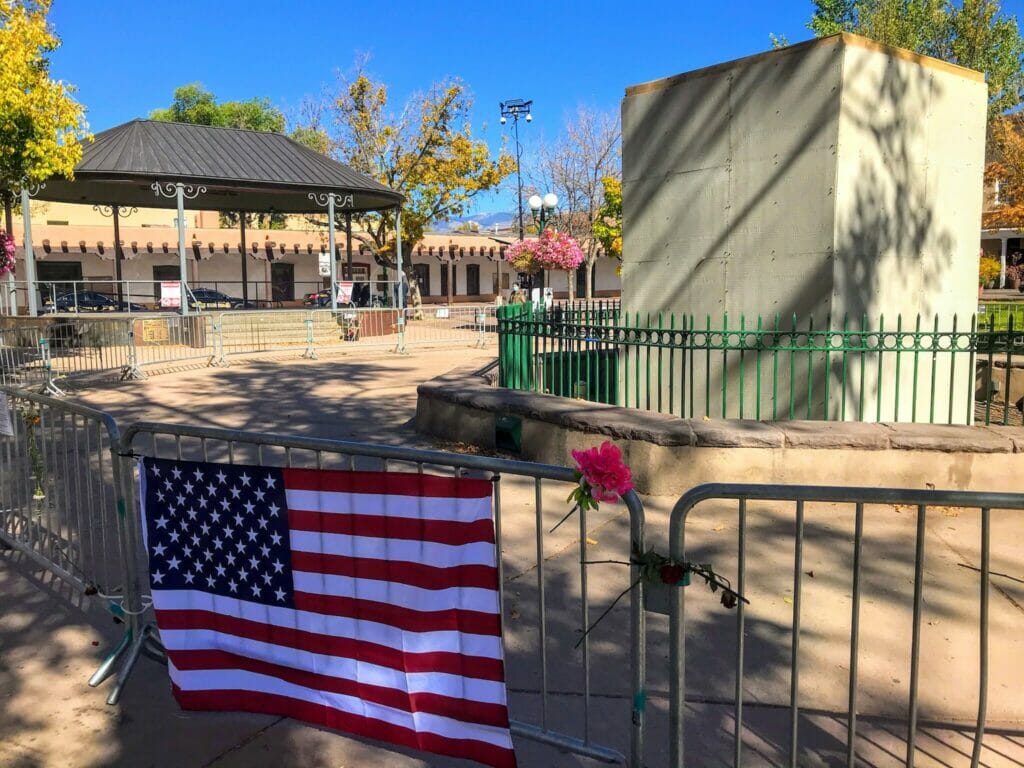
In the aftermath of George Floyd’s murder, the city removed the de Vargas statue in the wee hours of morning. Then on Indigenous People’s Day, a gathering of activists affixed chains and tow straps to the spire of the plaza obelisk and pulled it down by hand. I had hoped for a cleaner resolution, something less angry and spontaneous, perhaps a conversation led by First Nations leaders, informed by other Santa Feans on how the obelisk should be removed and what might replace it. The dialogue would produce a contrite acknowledgement that New Mexico’s first human inhabitants are still not savages and, most important, still alive.
Indeed, the mayor had been promising such a conversation since June.
I was born in Santa Fe, have been as proud of my “nativehood” as I am now embarrassed by the fact that my way was paved as it wasn’t for others. And as the previous paragraph indicates, my awareness remains woefully incomplete, that I would assume to solve a problem for which I, a member of the conqueror demographic, am inherently responsible. Perhaps the toppling of the obelisk expressed something close to this: the cause of indigenous healing didn’t need yet another opinion from a white guy.
Such events propose an uncomfortable, and I think necessary, future in which meaningful reconciliation entails more than just holding the line on social inequity and allowing the disadvantaged to catch up. Assuming a world where land, water and opportunity are finite and where justice for some has been elusive for too long, true and durable healing might require the surrender of certain gains.
In its pursuit of restoring New Mexico’s native Gila trout and Rio Grande cutthroat trout, Trout Unlimited recognizes two main threats: climate change and non-native trout species. In northern New Mexico, the main non-native villain is the brown trout. Its victim is the cutthroat. To be fair, settlers had been on the territory for centuries before non-natives were introduced. Their farming, logging, mining, wildlife harvesting, and ranching eventually took on an industrial scale. They’d already trapped out all the beaver and otherwise tamed the streams to a point where they functioned as little more than pipes, and leaky ones at that. In the struggle for what remained of viable habitat, brown trout — brought here from Europe — took control.
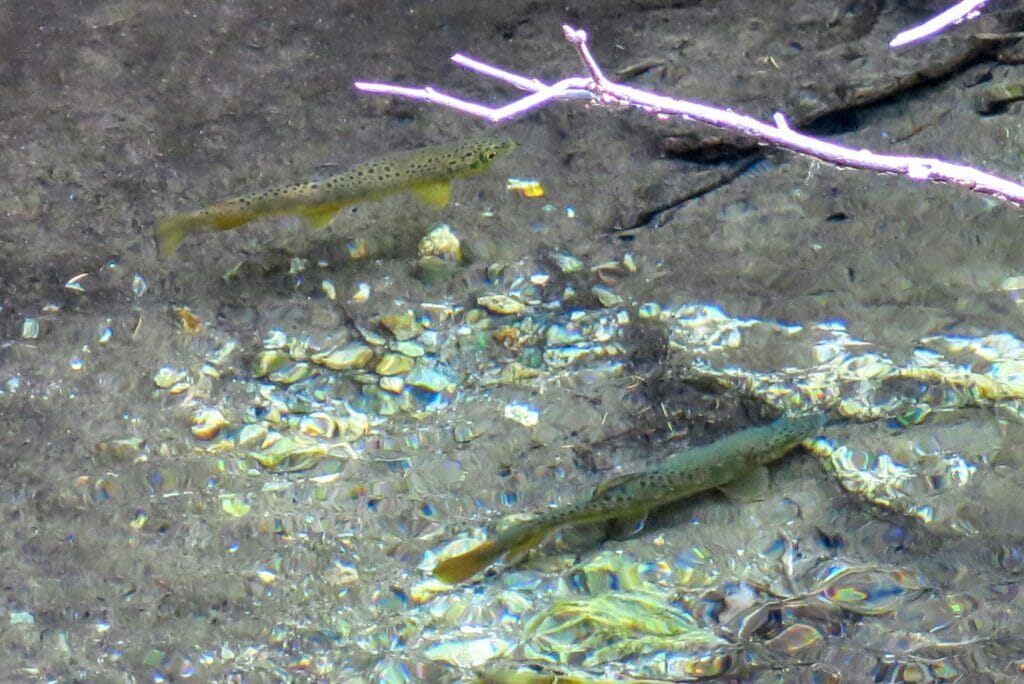
Once in an ecosystem, browns shoulder out natives through aggressiveness and reproductive success. They spawn in autumn when the water is low and stable. As a result, their hatchlings have a leg up on baby cutthroat, which emerge in early summer from eggs laid during the tumultuous spring snowmelt. Whether cutthroat spawning takes place at all, though, depends on the extent of brown trout infestation. During high spring flows, the best spawning locations are also the best resting spots. If brown trout are in those areas, they push out the cutthroats and suppress their propagation.
This forcible claiming of prime real estate has resulted in cutthroats being cut off from historic feeding and breeding grounds; they have been denied access to refuge and, significantly, each other. As cutthroat populations shrink, so does their genetic heterogeneity and resilience against climate change. Genes are like languages, and as we’ve witnessed in the disappearance of human cultures, the death of language is often a decisive final blow. The most insidious thing about the death of language is how completely negating it is. Without language, stories disappear, and with them, any evidence of a storyteller.
We are at the point where our natives won’t persist unless we intentionally, and with great urgency, reclaim their lost habitat. Not all of it, mind you — there aren’t enough years, and we do love our brown trout — but enough to enable thriving (not just survival) on the greatest possible portion of ancestral landscapes.
Thriving, to my mind, implies resilience, the capacity to absorb disturbance and maintain function. In the trout context, resilience is best achieved by following the wise and simple path of TU’s conservation approach: protect, reconnect, restore, and sustain. Salmonids everywhere have grown rich by this model.
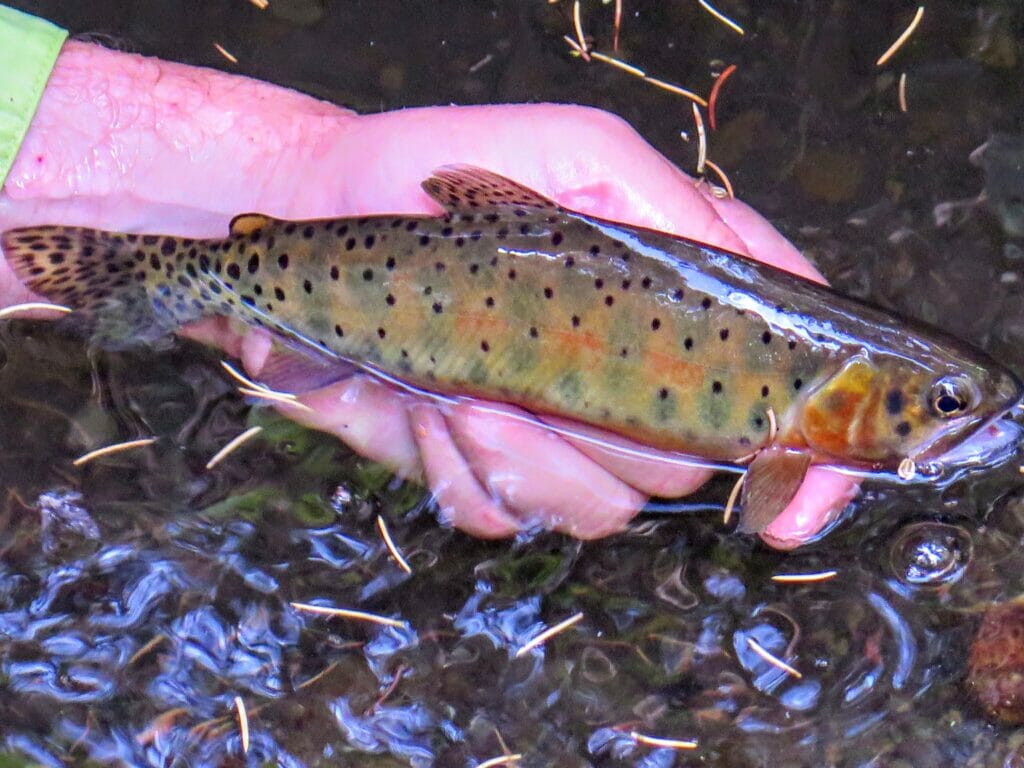
The approach works because it attends to everything a living being must have. Ask yourself these questions. Are you safe? Are you protected from outside threats? Can you access the necessities of life — food, shelter, health, your fellows — when and where you need them? Are you connected to your past through stories and language? Can you fix what is broken, make your environment work for you as before? Are you equipped to sustain yourself and your community through an uncertain future?
Something’s wrong if you answered “no” to any of these questions. And as long as “no” is an answer, there is work to be done.
Toner Mitchell is the water and habitat coordinator for Trout Unlimited in New Mexico.


